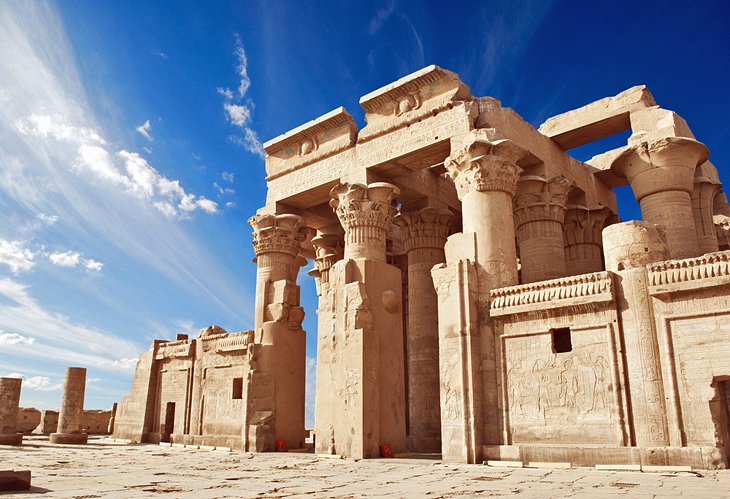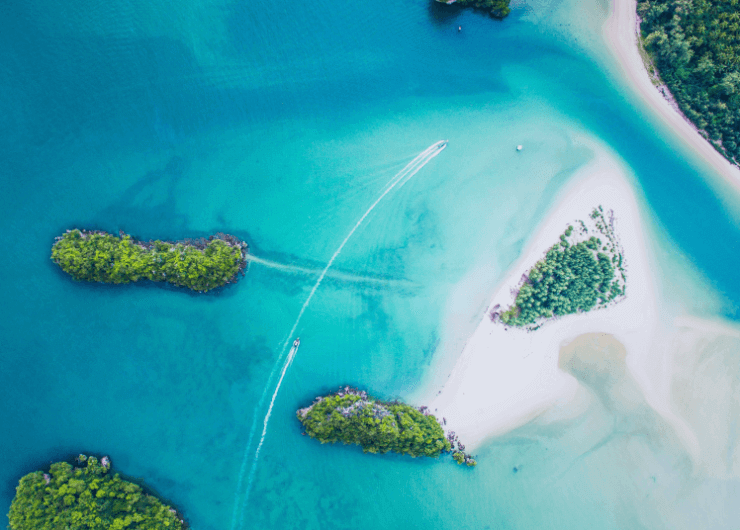Cultural, historical, adventure, and custom customized trips are just a few of the tours that Deluxe trips offer in Egypt and Jordan.

Perched along the banks of Egypt's mighty Nile River is one of the most unusual and architecturally fascinating of Egypt's ancient temples — the Kom Ombo Temple. Strategically located about 50 kilometers north of Aswan City, this beautiful structure merits not only its riverfront location but also because it has a double dedication. As opposed to all other Egyptian temples, Kom Ombo Temple has two gods — Sobek, the crocodile fertility and protector god, and Horus the Elder (Haroeris), the falcon-headed god of healing and kings.
A visit to Aswan, or an Egypt Nile cruise, means an unforgettable highlight in the form of Kom Ombo, which combines mythology, art, and ancient science to perfection.
Kom Ombo's architectural layout is unlike anything else. The temple is divided symmetrically into two equal parts — half for Sobek and half for Horus. Both half have their own entrance, sanctuaries, and specific rooms. This symmetry symbolizes the excellent equilibrium between good and evil, disorder and order — a theme that had been echoed a number of times in ancient Egyptian belief systems.
Built mainly during the Ptolemaic Dynasty (180–47 BC) and completed by Roman emperors, the temple is an impressive fusion of Egyptian religious tradition and Greco-Roman building style.
Sobek was worshiped as a powerful god who governed the fertility and protection of the Nile. He was also thought to banish evil and ensure that the waters of the Nile flowed plentifully to make the earth fertile. As a tribute to him, there is a Crocodile Museum near the temple where mummified crocodiles once worshiped by the people can be viewed. The well-preserved crocodiles tell us just how much respect the ancient Egyptians had for animals as religious objects.
Horus the Elder, or Haroeris, was a god of healing, kingship, and protection of the sky. As one of the most important gods in ancient Egypt, his presence at Kom Ombo Temple symbolizes divine order and justice. Reliefs throughout the temple depict Horus standing alongside pharaohs and gods, reiterating his role of protection in guaranteeing royal authority.
One of the most interesting aspects of Kom Ombo Temple is its medical reliefs, which are found in the inner walls. The reliefs contain pictures of ancient surgical instruments — scalpels, forceps, scissors, and even birthing chairs — showing the advanced level of medical knowledge in ancient Egypt times. These pieces of information highlight that temples were not only places of religion but also healing and learning centers.
With its location directly on the Nile River, Kom Ombo Temple is typically included as part of Nile River cruises between Aswan and Luxor. The atmosphere of the temple illuminated in the evening or morning, with the river serving as the background, creates a mystical ambiance that transports the visitor into the past.
You can see this jewel as part of our Luxor to Aswan Nile Cruise Tour or through booking one of our Aswan Day Tours** including Philae Temple and High Dam.**
Though Kom Ombo is the prime draw, your Aswan visit can also include:
Philae Temple: A temple dedicated to Isis, on Agilkia Island.
Unfinished Obelisk: Showing old stone carving methods.
Nubian Villages: For local crafts and immersion in culture.
Although partially destroyed by Nile floods and earthquakes, Kom Ombo Temple has been restored to a great extent. The temple walls stand tall, with tales of duality of god, science of yore, and spiritual belief.
The temple walls also inform us of the adoption of different cultures by Egypt — the inscriptions are in hieroglyphics, Greek, and Latin scripts, pointing towards the importance of the temple through empires.
Opening Hours: 7 AM to 5 PM daily
Entrance Fee: About 100 EGP (adjusting every time)
Location: Town of Kom Ombo, ~50 km north of Aswan
Best Time to Visit: October to April (winter months)
Recommended Tour Duration: 1–2 hours
A trip to the Temple of Kom Ombo is not just a tour of old ruins — it's more like taking a live lesson on history. With its twin gods, surgical statues, and symbolic architecture, this temple takes us into the religiosity and scientific depth of ancient Egyptian society.
Discover now our answers to the most common questions that may come to your mind about tourism and trips to Egypt
Cultural, historical, adventure, and custom customized trips are just a few of the tours that Deluxe trips offer in Egypt and Jordan.
The Dead Sea, Petra in Jordan, the Pyramids of Giza, Luxor's historic temples, and many other famous sites can be expected to be explored with Deluxe Tours.
offer a hassle-free holiday, Deluxe Tours' packages generally include lodging, transport, meals, guided tours with experienced local experts, and entry fees to attractions.
Spring (March to May) and fall (September to November) offer the finest weather for sightseeing and outdoor activities, making those months the best times to visit Egypt and Jordan.
These two countries are close by, only a 1.5-hour flight apart, and when combined, offer a variety of distinctive experiences. We advise you to spend at least 12 days visiting both countries for a truly unforgettable experience
Combining the eclipse viewing with visits to historic sites like the Pyramids of Giza, the Valley of the Kings, and a Nile River cruise are highly recommended.
